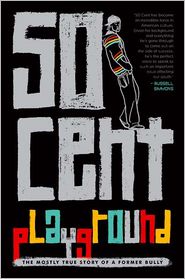Lists are fun. They provide endless hours of fun and debate. There are Top 10 lists, Top 11 lists, Top 500 lists and lists of variable lengths. Lists are an industry unto themselves. While there are many books of lists (have I said that word enough yet?) the books published by Universe are a cut above. Thick, heavy, long as they are (1001 things being a pretty ambitious target to hit), they do a great job. With that many items, it's pretty easy to find enough stuff that everyone is interested in, no matter what their taste.
There are several books under the banner (hence the vague title of this post) but I should be clear: for boys, the ones of prime interest will be the Songs, Albums, Comics and especially Video Games. There are other titles in the series (Books, Children's Books, Battles That Changed the World, Food, Art, etc.), and they'd probably like the Beer one too, but these are teen boys we are talking about. We should still pretend they have no idea about that stuff.
The lists are comprehensive, and are sorted chronologically. In some cases, the lists go back centuries, though in the case of video games I suppose merely decades, unless da Vinci was more ahead of his time than we thought and we just haven't discovered it yet. In all cases, they cover all genres. In music, there is pop, rock, rap, blues, electronic, indie, you name it. Video games covers all the major systems and types, from stand-up arcade hits to Angry Birds and everything in between.
These books are well suited to casual browsing. There is no narrative as each entry is entirely self-contained without reference to anything else in the book. They especially well-suited to groups of people sitting around it, fun for promoting debate about whether a certain item should be on the list, and comparing who has seen/heard/played what from the list. I've got the albums one, and I flip through it just to count how many of the albums I own. Likewise the games one: I've played a lot, but it's just as interesting to see what I've missed.
It's an expensive book, though. It cost me a lot buying albums I discovered through reading the book.
Little Tiger New Children's Book Titles January 2026 - Mr Ripley's
Enchanted Books
-
Guardians of the New Moon: The Year of the TigerBy Eric Huang, illustrated
by Phùng Nguyên QuangISBN: 9781788957571 / PB / £6.99The Heavenly Palace is
in u...
3 hours ago





















